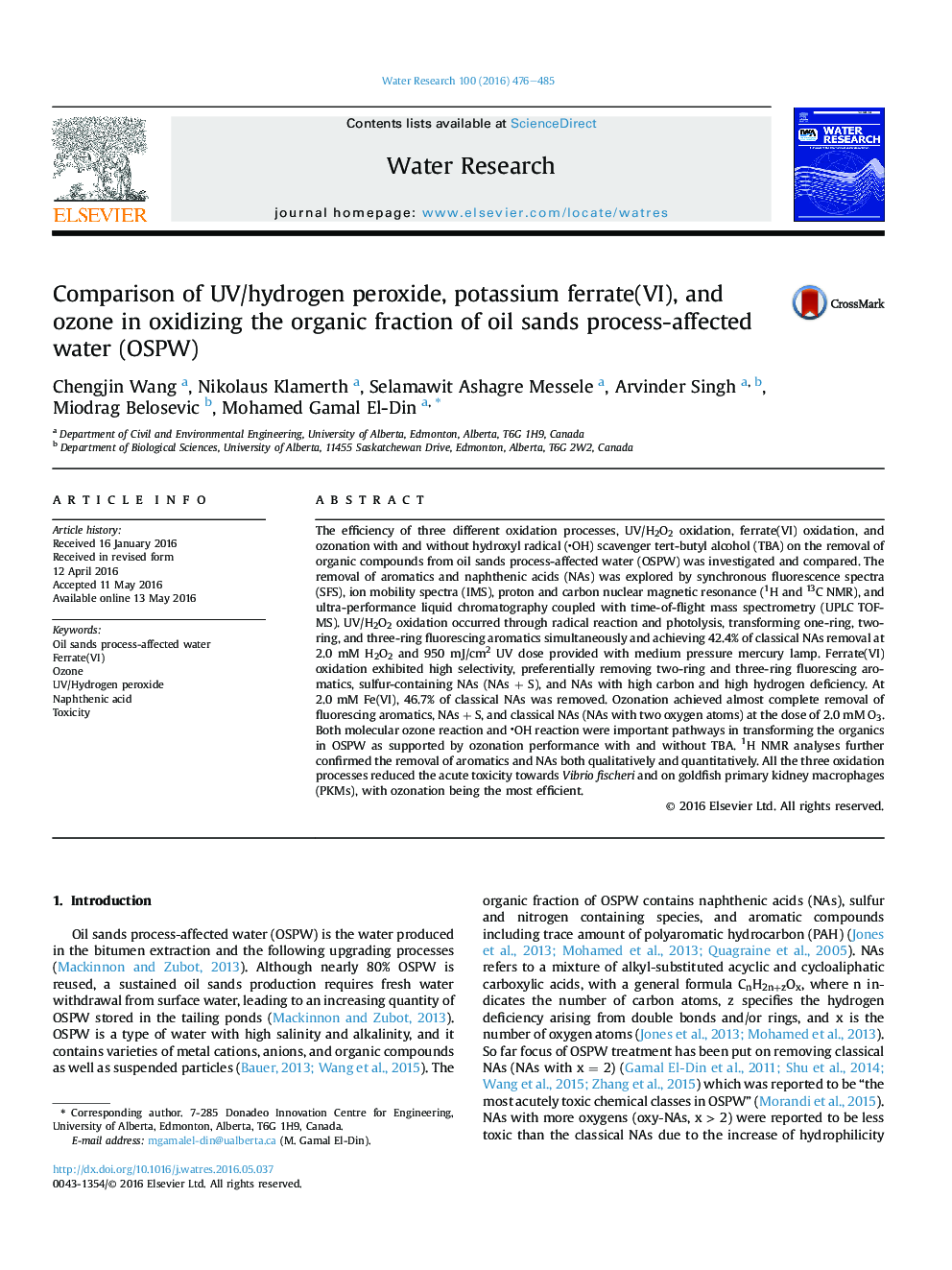| Article ID | Journal | Published Year | Pages | File Type |
|---|---|---|---|---|
| 6364389 | Water Research | 2016 | 10 Pages |
â¢Ozonation showed the highest efficiency in transforming aromatics and NAs in OSPW.â¢Direct ozone and indirect radical oxidation played important roles in ozonation of OSPW.â¢Ferrate(VI) oxidation exhibited high selectivity.â¢Direct photolysis and hydroxyl radical reaction contributed to the UV/H2O2 oxidation.â¢All the processes investigated reduced OSPW toxicity.
The efficiency of three different oxidation processes, UV/H2O2 oxidation, ferrate(VI) oxidation, and ozonation with and without hydroxyl radical (OH) scavenger tert-butyl alcohol (TBA) on the removal of organic compounds from oil sands process-affected water (OSPW) was investigated and compared. The removal of aromatics and naphthenic acids (NAs) was explored by synchronous fluorescence spectra (SFS), ion mobility spectra (IMS), proton and carbon nuclear magnetic resonance (1H and 13C NMR), and ultra-performance liquid chromatography coupled with time-of-flight mass spectrometry (UPLC TOF-MS). UV/H2O2 oxidation occurred through radical reaction and photolysis, transforming one-ring, two-ring, and three-ring fluorescing aromatics simultaneously and achieving 42.4% of classical NAs removal at 2.0 mM H2O2 and 950 mJ/cm2 UV dose provided with medium pressure mercury lamp. Ferrate(VI) oxidation exhibited high selectivity, preferentially removing two-ring and three-ring fluorescing aromatics, sulfur-containing NAs (NAs + S), and NAs with high carbon and high hydrogen deficiency. At 2.0 mM Fe(VI), 46.7% of classical NAs was removed. Ozonation achieved almost complete removal of fluorescing aromatics, NAs + S, and classical NAs (NAs with two oxygen atoms) at the dose of 2.0 mM O3. Both molecular ozone reaction and OH reaction were important pathways in transforming the organics in OSPW as supported by ozonation performance with and without TBA. 1H NMR analyses further confirmed the removal of aromatics and NAs both qualitatively and quantitatively. All the three oxidation processes reduced the acute toxicity towards Vibrio fischeri and on goldfish primary kidney macrophages (PKMs), with ozonation being the most efficient.
Graphical abstractDownload high-res image (316KB)Download full-size image
